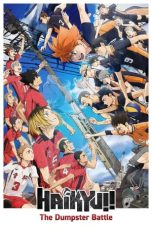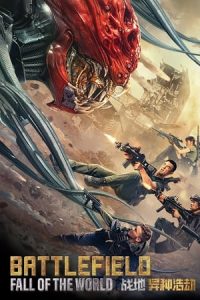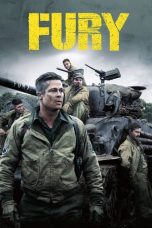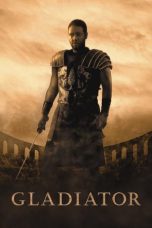- Source: Battle of Kruty
The Battle of Kruty (Ukrainian: Бій під Крутами, Biy pid Krutamy) took place on January 29 or 30, 1918, near Kruty railway station (today the village of Pamiatne, Nizhyn Raion, Chernihiv Oblast), about 130 kilometres (81 miles) northeast of Kyiv, Ukraine, which at the time was part of Nezhinsky Uyezd of Chernigov Governorate.
Order of battle
Ukrainian forces (D. Nosenko)
1st Student Company (Sich Riflemen auxiliary kurin) - Petro Omelchenko (fatally wounded) (116 soldiers) was split into four platoons
Cadet Corps of the 1st Ukrainian military school of Bohdan Khmelnytskyi - Averkiy Honcharenko (~200 soldiers)
Hlukhiv Free Cossacks (80 soldiers)
Cavalry detachment
Ad hoc armed train (consisted of artillery gun on a flatcar) - S.Loshchenko
Armored train - M.Yartsev (wounded), withdrew to Nizhyn
Russian forces (Mikhail Muravyov)
1st Revolutionary Army (Komdiv Pavel Yegorov) - 1,500
Baltic sailors of Remnyov
1st Petrograd Red Guards
1st battalion - Lifanov (wounded)
2nd battalion - Vorobyov
1st Moscow Red Guards - Ye.Lapidus
Armored train No.2
2nd Revolutionary Army (Komdiv Reingold Berzin)
436th Novo-Ladoga Regiment
534th Novo-Kyiv Regiment
detachment of Baltic sailors
Lenin armored train
The battle
As Bolshevik forces of about 4,000 men, commanded by Mikhail Muravyov, advanced toward Kyiv, a small Ukrainian unit of 400 soldiers of the Bakhmach garrison (about 300 of which were students), commanded initially by Captain F. Tymchenko, withdrew from Bakhmach to a small railroad station Kruty midway towards Nizhyn. The small unit consisted mainly of the Student Battalion (Kurin) of Sich Riflemen, a unit of the Khmelnytsky Cadet School, and a Free Cossacks company.
Just before the assault Tymchenko was replaced by D. Nosenko. Tymchenko left for Nizhyn in attempt to recruit the locally quartered Shevchenko Regiment (800 soldiers) to the Ukrainian side. On January 30, 1918, the Shevchenko regiment sided with the Soviet regime, the news of which forced the Ukrainian garrison of Kruty hastily to withdraw. Over half of the 400 men were killed during the battle, which lasted up to five hours. In Soviet historiography, the battle is mistakenly dated on January 29, 1918 and confused with the Plysky rail station skirmish (uk:Плиски (станція)).
The Haidamaka Kish of Symon Petlyura (300 soldiers) that rushed to reinforce the Kruty garrison and was delayed due to the Darnytsia railworkers sabotage and stopped in close vicinity at Bobryk railway station. They eventually turned back to Kyiv due to the Bolshevik Arsenal Uprising, which occurred on the same day.
Eighteen of the students were re-buried at Askold's Grave in the centre of Kyiv after the return of the Tsentralna Rada to the capital in March 1918. At the funeral the then President of the Ukrainian People's Republic, Mykhailo Hrushevsky, called every one of the 400 students who fought in the battle, heroes. Poet Pavlo Tychyna wrote "To the memory of the thirties" about the heroic death of the students.
After the fall of the Ukrainian People's Republic the bodies of the students were moved to the Lukyanivske Cemetery in Kyiv.
Ukrainian legacy
The true story of the battle was hidden by the Soviet Government. Only recently, a monument was set up to commemorate the 80th anniversary of the Battle of Kruty at Askold's Grave, and a commemorative hryvnia coin was minted. In 2006, the Kruty Heroes Monument was erected on the site of the historic battle. The battle is remembered each year on or around January 29.
Ukrainian youngsters lost their lives to stop the Bolshevist army of Russian Lieutenant General Nikolai Muravyov from advancing on Kyiv.
Young people, like Spartan soldiers, died for the sake of their motherland in a struggle against foreign aggressors, and it was an example of their sacrifice and selfless love for their native land.
Every anniversary of the Heroes of Kruty is not only a day to honor those people who loved our motherland more than their lives. This is also another reminder to our contemporary politicians regarding their responsibility for the fate of their country and people.
Near Kruty the Kyiv military cadets and students became the forerunners of the Ukrainian political nation. Having different ethnic roots, they as one fought for our Ukrainian State. As the founding of the Ukrainian People's Republic became the base of the Ukrainian statehood, so the heroism of the Kruty's warriors became the beginning and the symbol of liberating struggles of Ukrainians for the liberty in the past 20th century.
On 1 March 2022, the armed forces of Ukraine successfully defended the area around Kruty from a Russian army attack during the 2022 Russian invasion of Ukraine, with the Russians losing nearly 200 men. Before the fighting, Russian soldiers took photos near the Memorial to the Heroes of Kruty, and fired on it.
= Important personalities
=Leonid Butkevych, the youngest soldier who was in the sixth grade
Yakiv Ryabokin-Rohoza-Rozanov
Volodymyr Shulhyn, a brother of the Ukrainian statesman Oleksander Shulhyn
Ivano Hrushetsky, later an Orthodox priest who eventually died in a Soviet prison in August 1940
Mytrofan Shvydun, later continued to fight on the "Shooter" and "Free Ukraine" armored trains and in 1941 organized the Lutsk Battalion of OUN (Organization of Ukrainian Nationalists)
Mykhailo Mykhailyk, later wrote a detailed memoir about the battle
Numerous former students of Kruty became the base of the officer corps of the legendary Black Zaporizhians Cavalry Regiment
Mykola Kryvopusk and Hnat Martynyuk in 1920-1921 served as personal bodyguards of Symon Petlyura, Martynyuk, after becoming a priest, perished in Volyn in 1943 under unknown circumstances
Serhiy Zakhvalsky, eventually became an officer in the Polish Army, however, he was renowned for imprisoning a whole company of the Red Army in 1920, while heading one of the cavalry squads of the Zaliznyak Cavalry Regiment
Averkiy Honcharenko, in 1943 became one of the organizers of the SS Halychyna of which he was appointed a commander in 1945
Petro Franchuk, one of the members of SS Halychyna
Yuri Voronoy, son of Ukrainian mathematician Georgy Voronoy, performed the first human kidney transplant in 1933
= To the memory of the thirties
=In art
= Films
=Kruty 1918 (2019) directed by Olexii Shaparev .
Gallery
See also
Kruty Heroes Memorial
Kyiv Arsenal January Uprising
Group of forces in fight with counter revolution in the South Russia
Notes
References
External links
Janiw V. "The Battle of Kruty"
Montage about the Battle of Kruty
"Kruty, Battle of". Encyclopedia of Ukraine. Retrieved August 15, 2006.
Soldatenko, Valeriy. «І справжні, не фальшиві фарби»? Kruty: an attempt of the historic interpretation" in Zerkalo Nedeli, January 28 - February 3, 2006. Available in Russian and Ukrainian
"The president opened a memorial to the Heroes of Kruty". Korrespondent (in Russian). Retrieved August 25, 2006.
Крути. Sketch of the history of Ukraine (in Ukrainian). Archived from the original on July 21, 2012. Retrieved February 16, 2007.
Життя після Крут. Як склалася доля учасників січневого бою
www.kruty.org.ua/
Чому «вороженьки» бояться пам’яті героїв Крут?
The Battle of Kruty : the free world's first resistance to communism
Kata Kunci Pencarian:
- Battle of Kruty
- Chernihiv Oblast
- Askold's Grave
- Kiev Arsenal January Uprising
- Bakhmut Fortress
- Kruty, Chernihiv Oblast
- Georgy Voronoy
- Group of forces in battle with the counterrevolution in the South of Russia
- Military Institute of Telecommunications and Information Technologies
- Mikhail Artemyevich Muravyov
Battlefield: Fall of The World (2022)
Gladiator (2000)
No More Posts Available.
No more pages to load.














